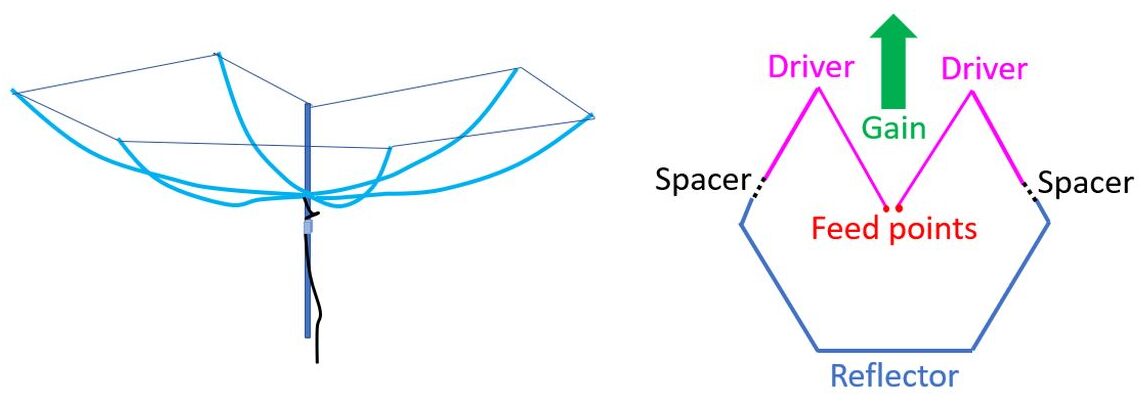What is a Hexbeam Amateur Radio Antenna?
Hexbeam or hexagonal beam is a directional HF antenna popular among amateur radio operators for DX work and contests. The name comes from the hexagonal outer shape of the antenna. It looks like an upturned umbrella as well! In the original design by Mike Traffie, N1HXA, in 1996, both director and reflector had W shape or M and W to be more specific.
The revised shape by Steve Hunt, G3TXQ is shown in the figure, with reflector like half of a hexagon. The bending of the driver and reflector reduces the turning radius of the whole antenna compared to the Yagi-Uda antenna, which also works on the same principle. Lesser size would mean a light weight antenna with obvious advantages on the mast and rotating infrastructure, avoiding the need for a hefty antenna tower.
Multi-band hexbeam antennas covering multiple bands like 20, 15 and 10 or more are popular. In multi-band hexbeam the elements for the lowest frequency are at the exterior of the antena. Vertical spacing between the elements is critical as multi-band elements can influence each other if the elements are not parallel. Figure shows only elements of a single band for simplicity. Supports are made of non-conducting material while the elements can be of insulated copper wire. Hexbeam has a gain of 5-6dBi and forward/reverse attenuation up to 20 dB.
